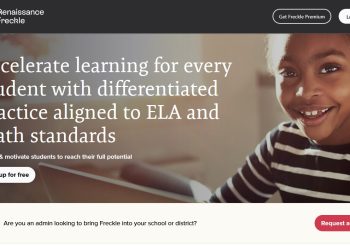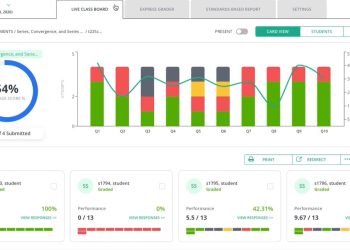Become an expert in your PJs!’ ‘Learn coding from the comfort of your own bedroom!’ ‘Study according to your terms!’
We have all heard and read such taglines for online learning programs. The online learning regimen took a whole new routine during the tight grip of the coronavirus pandemic and since, it has become a much familiar method of learning.
Online courses and degree programs are more flexible and convenient than the traditional onsite learning experience. Online learning platforms like Udemy, edx, Coursera, etc. have brought so many new learning dimensions into the sphere that it has become overwhelming. Furthermore, universities have introduced online degree programs and certifications to facilitate students around the world.
This guide is formatted in a way that you get a well-rounded understanding of the dynamics of online learning.
Online Learning
Online learning is an educational method in which students receive online instructions through video conferencing, video recordings, online classes, or other mediums of technology. It allows students to learn without being physically present in a class.
You can expect these types of lectures during online learning:
Pre-recorded classes – allowing students to watch them at their own convenience and pace. This type of learning is called asynchronous learning.
Live classes – requires students to be present online at particular times. This type of learning is called synchronous learning.
Combination classes – are a blend of both asynchronous and synchronous learning.
In online learning, students are provided with the following learning resources:
- Journals
- Quizzes
- Interviews
- Recorded audio/video classes
- Discussion forums
- Presentation Slides
- Live Q&A with the expert
Some online courses or programs might require you to get hard copies of certain textbooks, however, this practice is being obsolete by the minute. Once you sign up for an online course, you get your hands on the entire course material and learning resources.
Who should be the recipient of online learning?
More and more people have started taking advantage of online learning programs. These learning opportunities are not just for students enrolled in programs who are bound to learn things; most times, anyone interested in any subject matter can start learning without having to have prior experience in the field.
Online learning is especially beneficial for the following people:
- People residing in rural places or those who are unable to attend classes physically.
- Anyone from around the world can enroll in an online program of any college or university.
- Enterprise might utilize online learning courses for employee training sessions.
What technology is required for online learning?
A lot of different technologies can be incorporate during online learning. However, the basics remain the same:
- A computer system that enables you to view learning resources and video lectures.
- A high-speed internet so that your learning never gets interrupted. Many internet providers offer year-round discounts; for example, Time Warner Internet offers high internet speeds with a free antivirus software and other perks at reasonable prices.
- For synchronous learning, you might also need a webcam and functional microphone.
If you do not have a PC, you can always use your smartphone device or any other internet-associated display device like a tablet for online learning.
How does online learning work?
There are different derivatives of online learning and this guide will cover all the important ones in this section:
- Students communicate with each other and the instructor in a chat room. Such chat rooms allow students to share their feedback and ask questions without having to be physically present in a classroom setup. Instructors and students can also connect with each other through video conferencing tools.
- Group projects can also be worked through in these chat rooms. Students are advised to use instant messaging tools, emails, and other web technologies to correspond with each other for project ideas.
- Couse projects and assignments are completed and submitted on the course website or can be sent to the instructor through email attachments. These projects and assignments have strict deadlines too.
- Learning resources and other reference materials are provided to students online.
- Students are allowed to clear their ambiguities through emails and chat rooms. Instant messaging tools are also being used for quick interactions between teachers and students.
Benefits of online learning
Here are some of the top advantages of online learning:
- It allows you to learn at your own pace which means that you do not have to mold your busy schedule for your courses. Many people do not enroll in courses because they cannot take out the time but with online learning, that issue becomes void.
- Online learning is cheaper than in-class learning and so all those students who gave up on the idea of higher education because of the cost can resume their learning.
- Online learning enables students to become a lot more mature. Time management, efficient and responsible routines, and critical thinking become a part of every day for online learners making them more proficient.
- It improves the technical knowledge of students as everything is on the internet and computer. Furthermore, e-learning tools like Skype, Slack, Dropbox, etc. are part of the learning process.
Famous Online Learning Portals
While most educational institutes have started online segments of their educational systems, there are some online learning portals that can assist you with learning any new topic. Mentioned below are some of the famous ones for your reference:
- Udemy
- Treehouse
- Khan Academy
- Coursera
- Skillshare
- LinkedIn Learning
- edX
- Shaw Academy
The Final Thoughts
The rise of online learning platforms is the future of education. They provide students with convenient, cost-effective alternatives to traditional higher education, while simultaneously providing top-quality courses that are taught by highly qualified educators. An increasing number of students are looking to get an education online. Since online learning is more convenient for working adults, it is no surprise that it has become so popular. For high school and college students, online learning offers many benefits over traditional classroom schooling, including increased access to educational resources and the ability to learn at your own pace.






